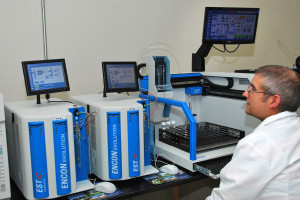Waste Characterization
RTI Laboratories performs Waste Characterization on solid, liquid and other waste materials to determine hazardous classification based on 40 CFR Subpart 261 RCRA criteria. Tests include Ignitability, Corrosivity and Toxicity Characteristic Leaching Procedure (TCLP). In addition, RTI is capable of performing the Synthetic Precipitation Leaching Procedure (SPLP) for a variety of applications.

TCLP and SPLP Methods are used to determine the mobility of organic and inorganic analytes present in the sample. EPA method 1311 is used in TCLP determination while EPA method 1312 is used for SPLP extraction. Analytical results from TCLP extracts are used to assess hazardous characteristics of a material against the criteria specified in 40 CFR Part 261. EPA method 1010A is used for determining Flash Point in a Pensky-Martens Closed-Cup Tester. Corrosivity is assessed by measuring the pH of the sample. Samples containing more than 0.5% solids are leached in a rotary extraction container or zero headspace vessel by rotating the sample in the designated extraction fluid vessels at 30 rotations per minute for 18 hours. The resulting leachate is then analyzed by one or all of the methods listed below. Samples that contain less than 0.5% solids are filtered through a 0.6 to 0.8 µm glass fiber filter and are then analyzed.
Available Method Summary:
| Analyte | EPA Method |
| TCLP | 1311 |
| SPLP | 1312 |
| Extract Analyses: | |
| Volatile Organics | 8260C |
| Semi-Volatile Organics | 8270D |
| Pesticides | 8081B |
| Herbicides | 8151A |
| Metals | 6010C/6020A/7470A |
| Flashpoint (Liquids) | 1010A |
| Ignitability (Solids) | 1030 |
| Corrosivity | 9045D/9040C |

